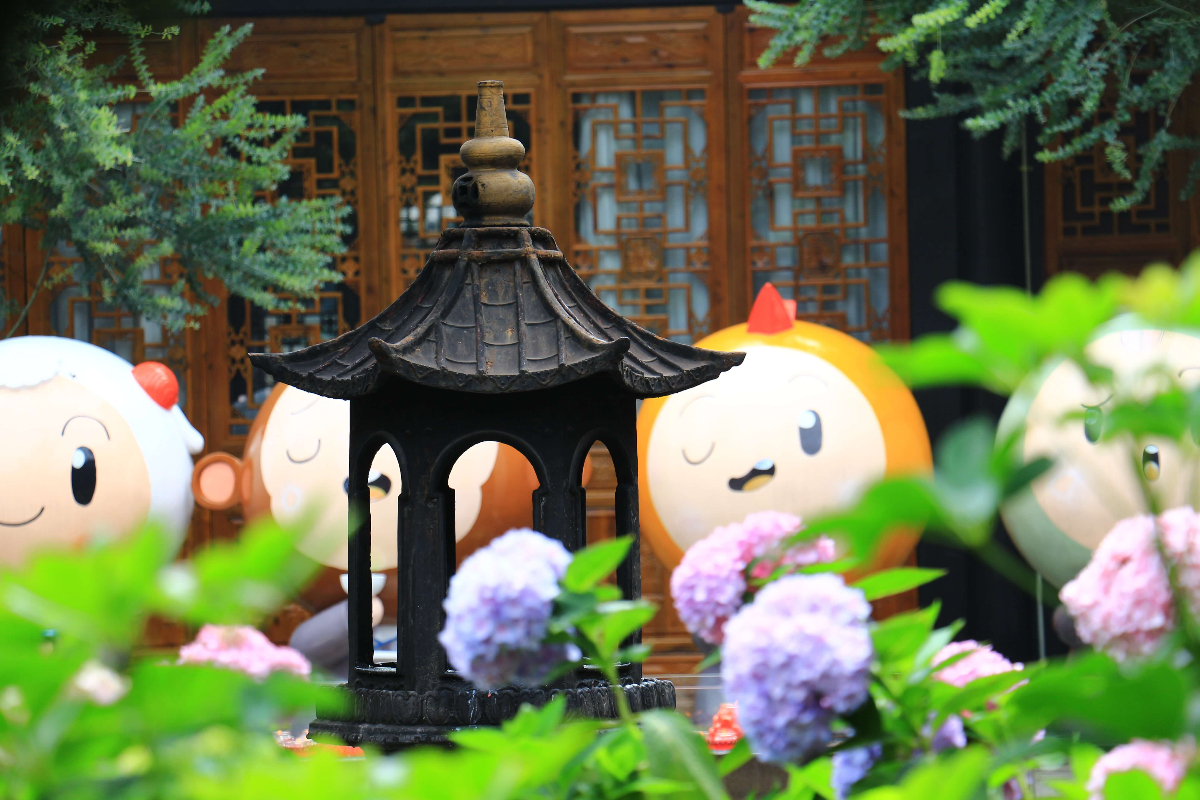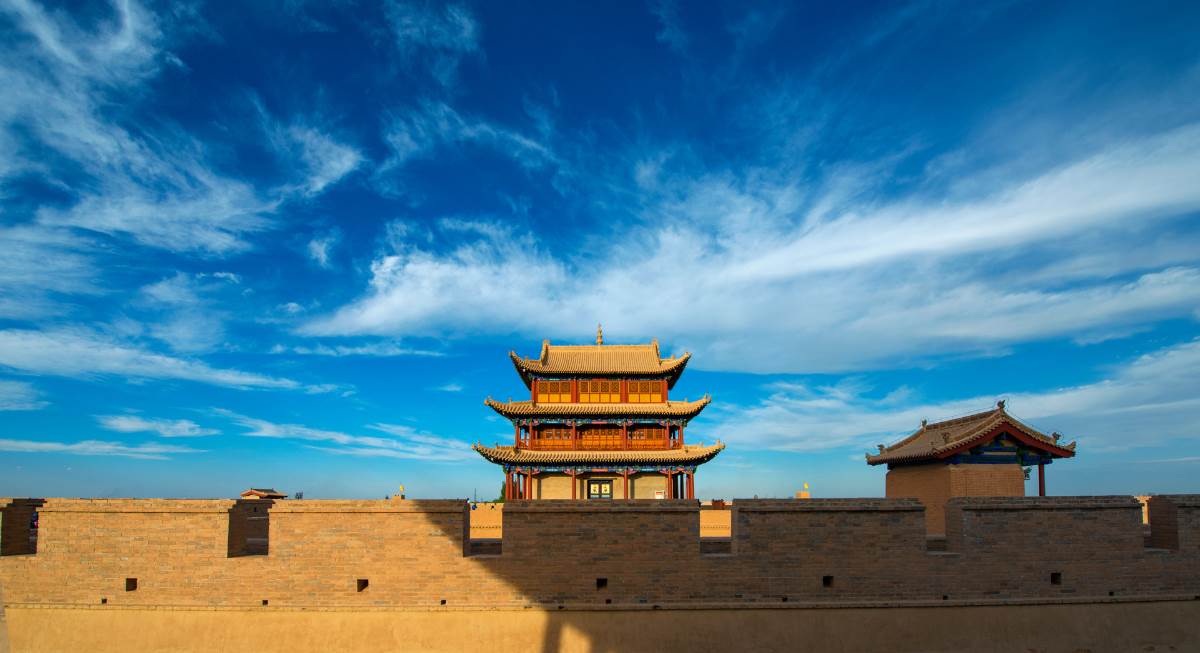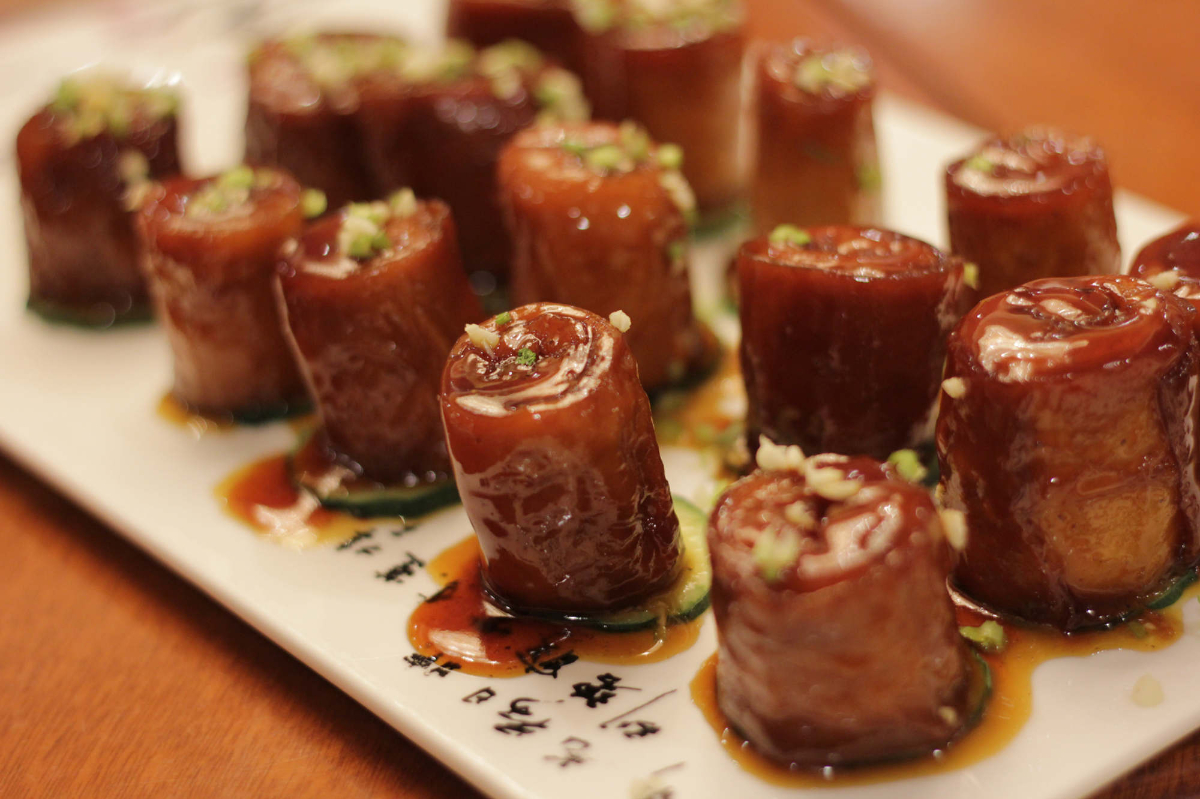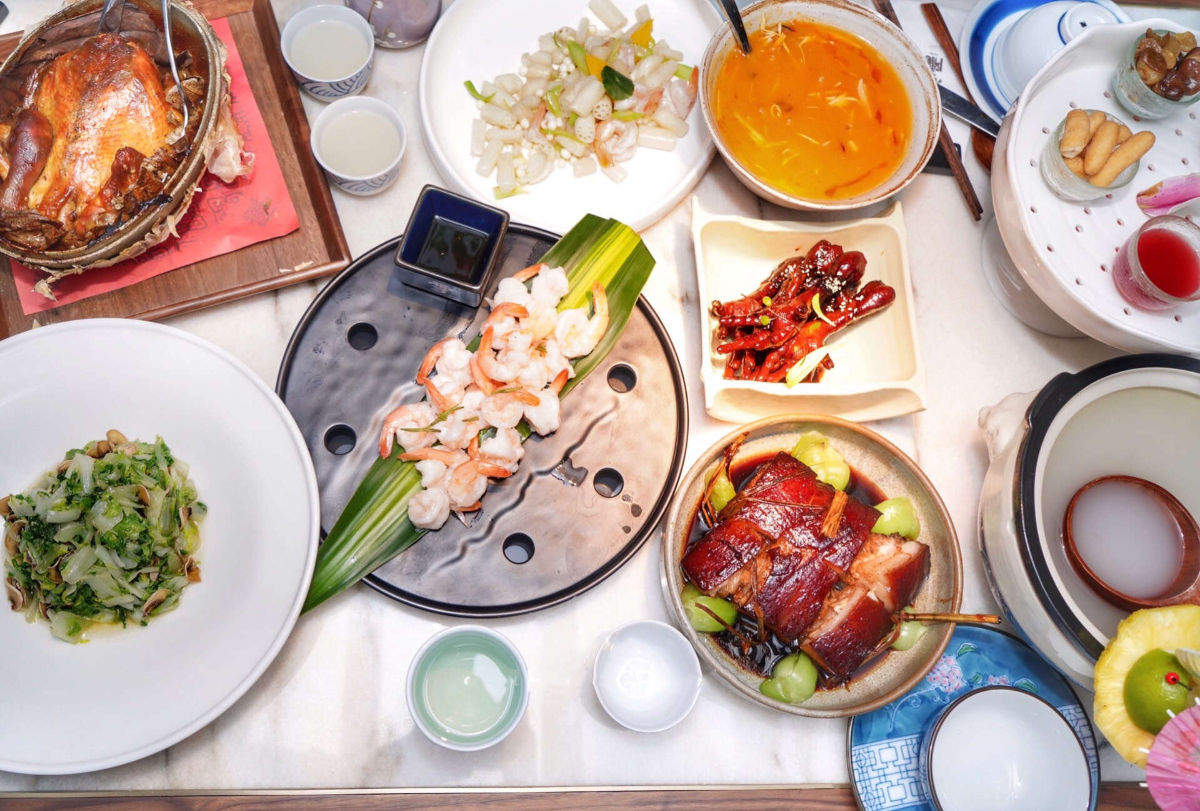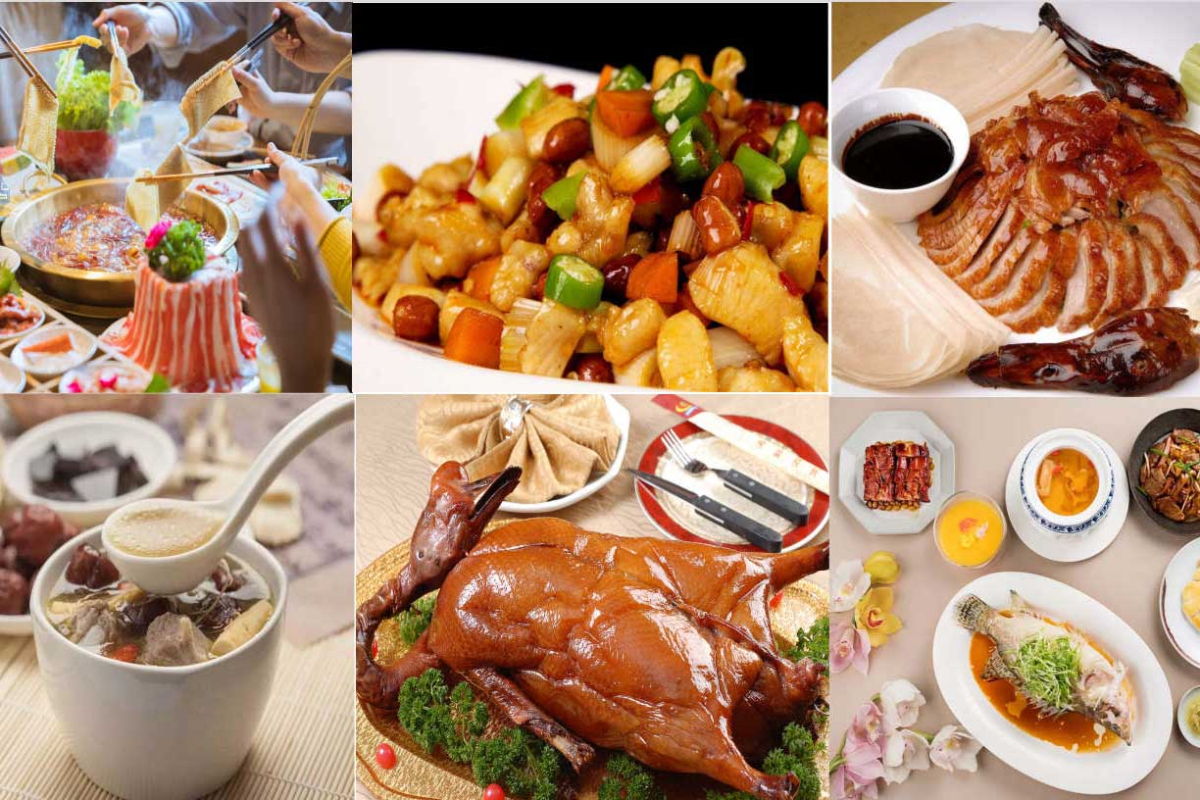Four Major Cuisines in China ~ Zhejiang Cuisine
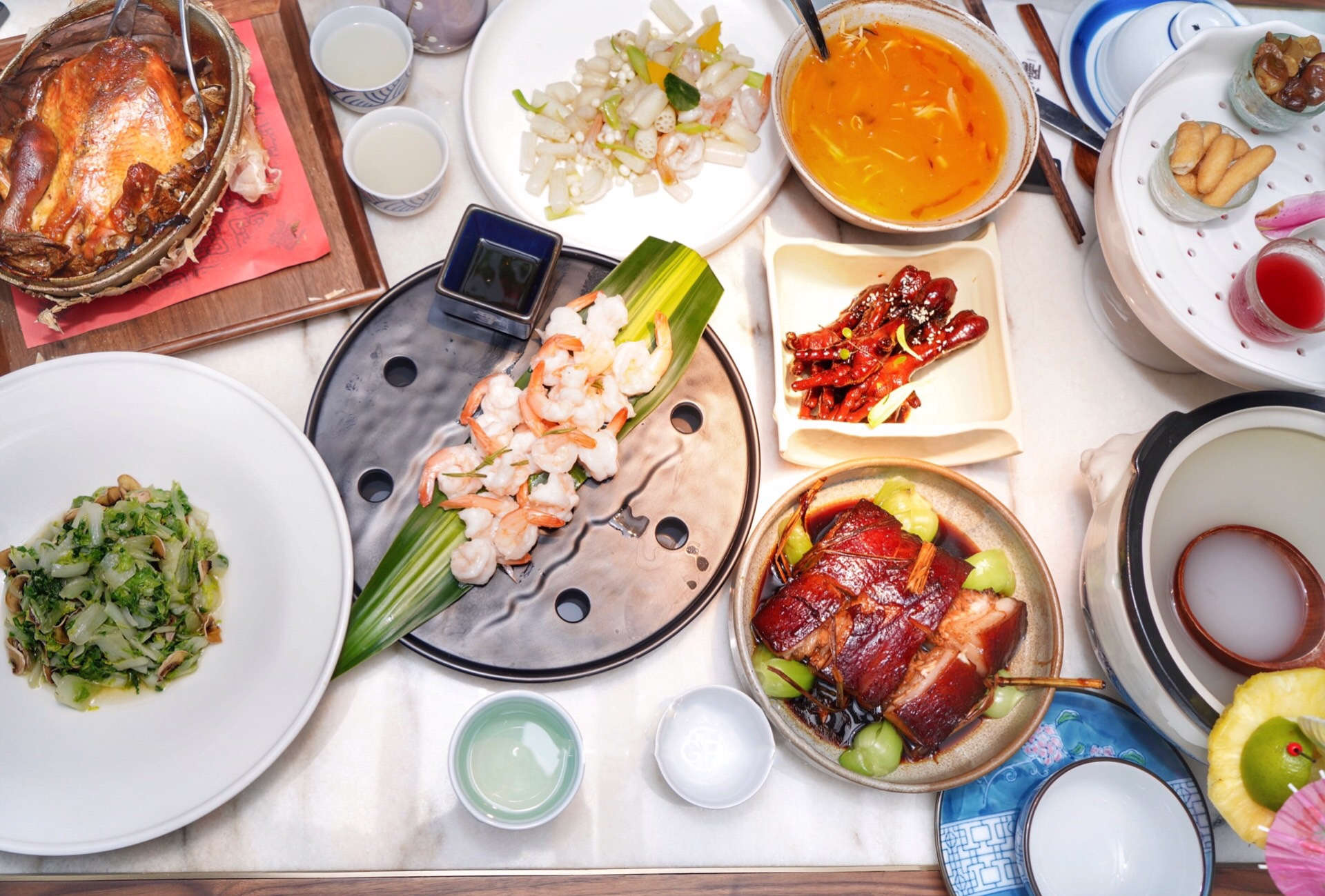
Zhejiang Province is near the sea in the east. There are thousands of miles of coastline and rich seafood, such as the famous Zhoushan fishing ground fish, hairtail, octopus, grouper, lobster and oyster, clams, shrimp, crab. Plains and rivers are cross-distributed. The famous Taihu Lake is located in the south of Huzhou, rare species of freshwater fish, such as perch, carp, shrimp, crabs and other fish. It is also the main producing area of Sericulture and rice, known as the "breadbasket" of China.
The mountainous southwest, historically famous for game delicacies like Qingyuan mushrooms, Jingning black fungus. Zhejiang Central Basin - Jinqu basin, namely Jinhua big barn. The famous Jinhua ham is made of the famous Jinhua Pig. The world-famous Hangzhou Longjing tea leaves, Shaoxing wine are all indispensable superior raw materials of cooking.it is one part of Chinese culture.
Zhejiang cuisine (浙菜) has rich southern features with a long history and it is China's famous local dishes species. Zhejiang cuisine originated in the Neolithic Hemudu culture. Zhe cuisine has gone through the accumulation through pioneering ancestors, mature stereotypes in Han and Tang Dynasties, prosperity in Song and Yuan Dynasties and development in Ming and Qing Dynasties, the basic style of Zhejiang cuisine has been formed.
● The Flavor of Zhejiang Cuisine
The characteristics of Zhejiang Cuisine can be summarized into four words, namely exquisiteness, specialty, freshness and tenderness. Exquisiteness refers to the strict ingredient selecting principle of Zhejiang Cuisine. Usually only the best parts will be kept in order to keep the high-quality of the dishes. Specialty refers to Zhejiang Cuisine preferring in using local seasonal specialties to highlight the local flavor. Freshness refers to Zhejiang Cuisine requiring the freshness of the raw material to make sure the authentic taste of the dishes. And tenderness means to use new ingredients to guarantee the tender and crisp taste of the dishes.
Zhejiang Cuisine is renowned home and abroad for its diversified cooking techniques. It is especially good at sautéing, frying, stewing, stir- frying, steaming and roasting. All these cooking techniques are applied according to the utmost principle to preserve and convey the original flavor of the ingredients. Seasonings are also applied according to this principle. Zhejiang Cuisine believes that only when there are unnecessary tastes or smells of the ingredients need to be removed, then seasonings are necessary
● The four famous local cuisines of Zhejiang province
Zhejiang cuisine can easily be divided into the following four local cuisines:
Hangzhou cuisine
Since becoming the province capital, Hangzhou cuisine has become quite popular. Hangzhou food features freshness and lightness. Stir-fried, steamed, or pot-roasted dishes, elegantly displayed on your plate. The story goes that Hangzhou cooks include bamboo shoots in at least half of their dishes.
Ningbo cuisine
Ningbo cuisine features fresh and salty seafood, with an emphasis on the original flavor of the carefully selected ingredients. Ningbo cooks have their own unique way of quick-frying, stir-frying, deep-frying, simmering, and steaming to make sure the food is tender and fresh.
Shaoxing cuisine
Have a taste of the rural charm of Shaoxing. Shaoxing cuisine boasts mild and refreshing flavors and includes fresh ingredients such as fish, shrimp, poultry, beans, bamboo shoots, and many more. Raw ingredients are usually steamed or stewed with the famous Shaoxing rice wine.
Wenzhou cuisine
With over 30 different cooking methods and more than 250 seafood dish varieties, Wenzhou cuisine is anything but boring. Wenzhou locals have very special ways of preparing and their seafood. For instance, drying fresh yellowfin tuna, soaking jellyfish, or eating live shrimp with a hint of local rice wine, sugar, and ginger. Wenzhou cooks place great importance on the art of cutting food, and an aesthetically pleasing result.
● Some Famous dishes of Zhejiang Cuisine
Drunken chicken
Often dubbed a Shanghainese specialty, drunken chicken is, in fact, an authentic dish originating from the Zhejiang province. The main ingredients of this chicken dish are a fresh, whole chicken and Shaoxing wine, a renowned rice wine produced in Zhejiang province.
Originally, the recipe calls for a whole chicken to be cooked, chilled in ice water, and then soaked in a Shaoxing wine-based marinade, overnight, or for 2-3 days. The chilled chicken is then cut into large chunks and traditionally served cold, covered with the wine-based marinade.
The dish is usually served on its own, as an appetizer, but it can also be accompanied by rice, noodles, or vegetables.
Fried Shrimps with Longjing Tea
Regarded as a specialty of Hangzhou city, fried shrimps with Longjing tea is one of the best-known dishes of Zheijang cuisine that makes use of the outstanding Longjing tea. Large live shrimps are first soaked in a marinade of egg whites, cornstarch, and rice wine, and then cooked along with steeped Longjing tea.
The fragrant and refreshing green shoots of Longjing tea beautifully complement the delicious white shrimps, giving this authentic dish an exquisite flavor. These stir-fried shrimps are served hot or chilled, drizzled with the cooking liquid and seasoned with salt and pepper to taste.
West Lake Vinegar Fish
This popular Hangzhou dish with a sweet and sour flavor is traditionally made with cleaned grass carp that is poached or steamed with ginger, then covered with a sauce consisting of black vinegar, brown sugar, soy sauce, corn flour, water, and stock.
When served, the fish is usually topped with sesame oil and finely chopped spring onions. Some sources date West Lake vinegar fish to the Southern Song Dynasty (1127-1279), when it was supposedly prepared by a woman named Sister Song in her restaurant near the West Lake.
Hangzhou-style duck pickled in soy sauce
Hangzhou-style duck pickled in soy sauce is a delectable specialty dish of Hangzhou cuisine that delivers the authentic flavors of the region. This dish consists of duck meat cooked in a marinade, and it is then covered with soy sauce and served alongside rice or noodles.
Deliciously crispy on the outside while remaining tender and moist on the inside, the duck is commonly served chilled. This dish is aromatic, predominantly savory, and slightly sweet in flavor. It is traditionally prepared and consumed during the celebration of the Chinese Lunar New Year.
Beggar's chicken
Beggar's chicken is a Chinese delicacy and the city of Hangzhou's most famous dish, consisting of only one ingredient - a whole chicken. The secret is in the preparation method: the stuffed chicken is tightly wrapped in lotus leaves, packed in clay, and baked in a special oven or over an open fire, resulting in tender, moist, and aromatic meat, along with being one of the visually most interesting dishes in existence.


